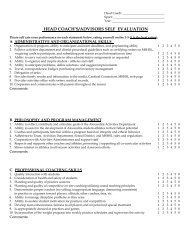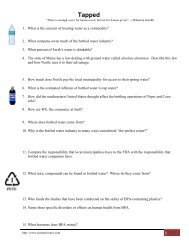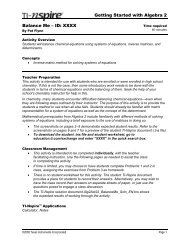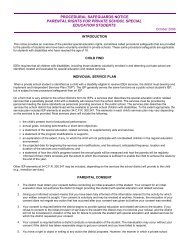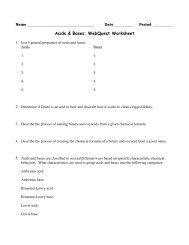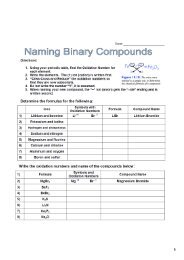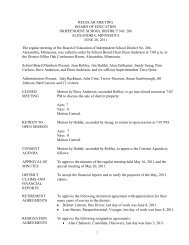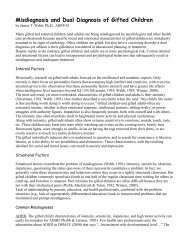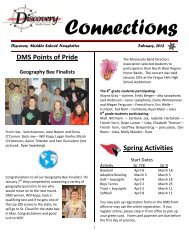Chapter 4 - Implementing a System of Research-based Interventions
Chapter 4 - Implementing a System of Research-based Interventions
Chapter 4 - Implementing a System of Research-based Interventions
You also want an ePaper? Increase the reach of your titles
YUMPU automatically turns print PDFs into web optimized ePapers that Google loves.
<strong>Chapter</strong> 4 <strong>Implementing</strong> a <strong>System</strong> <strong>of</strong> <strong>Research</strong>-Based <strong>Interventions</strong><br />
Appendix<br />
Checklist to Determine if an Intervention is <strong>Research</strong>-<strong>based</strong><br />
Adapted from Identifying and <strong>Implementing</strong> Educational Practices Supported by Rigorous<br />
Evidence: A User Friendly Guide. U.S. Department <strong>of</strong> Education Institute <strong>of</strong> Education<br />
Sciences National Center for Education Evaluation and Regional Assistance (2003).<br />
Step 1.<br />
Is the intervention supported by scientific research?<br />
Quality <strong>of</strong> the evidence: Ideally randomized controlled trials that are well-designed and<br />
implemented. The following are key items to look for in assessing whether a trial is welldesigned<br />
and implemented.<br />
1. Key items to look for in the study's description <strong>of</strong> the intervention and the random<br />
assignment process:<br />
The study should clearly describe the intervention, including: (i) who administered<br />
it, who received it, and what it cost; (ii) how the intervention differed from what the<br />
control group received; and (iii) the logic <strong>of</strong> how the intervention is supposed to<br />
affect outcomes.<br />
Be alert to any indication that the random assignment process may have been<br />
compromised.<br />
2. The study should provide data showing that no systematic differences exist between<br />
the intervention and control groups prior to the intervention. Key items to look for in the<br />
study's collection <strong>of</strong> outcome data:<br />
The study should use outcome measures that are "valid" (i.e., that accurately<br />
measure the true outcomes that the intervention is designed to affect).<br />
The percent <strong>of</strong> study participants lost when collecting outcome data should be<br />
small, and should not differ between the intervention and control groups.<br />
The study should collect and report outcome data even for those members <strong>of</strong> the<br />
intervention group who do not participate in or complete the intervention.<br />
The study should preferably obtain data on long-term outcomes <strong>of</strong> the intervention,<br />
so that you can judge whether the intervention's effects were sustained over time.<br />
3. Key items to look for in the study's reporting <strong>of</strong> results:<br />
If the study makes a claim that the intervention is effective, it should report the size<br />
<strong>of</strong> the effect and statistical tests showing the effect is unlikely to be the result <strong>of</strong><br />
chance.<br />
Minnesota Department <strong>of</strong> Education Draft 4-38



